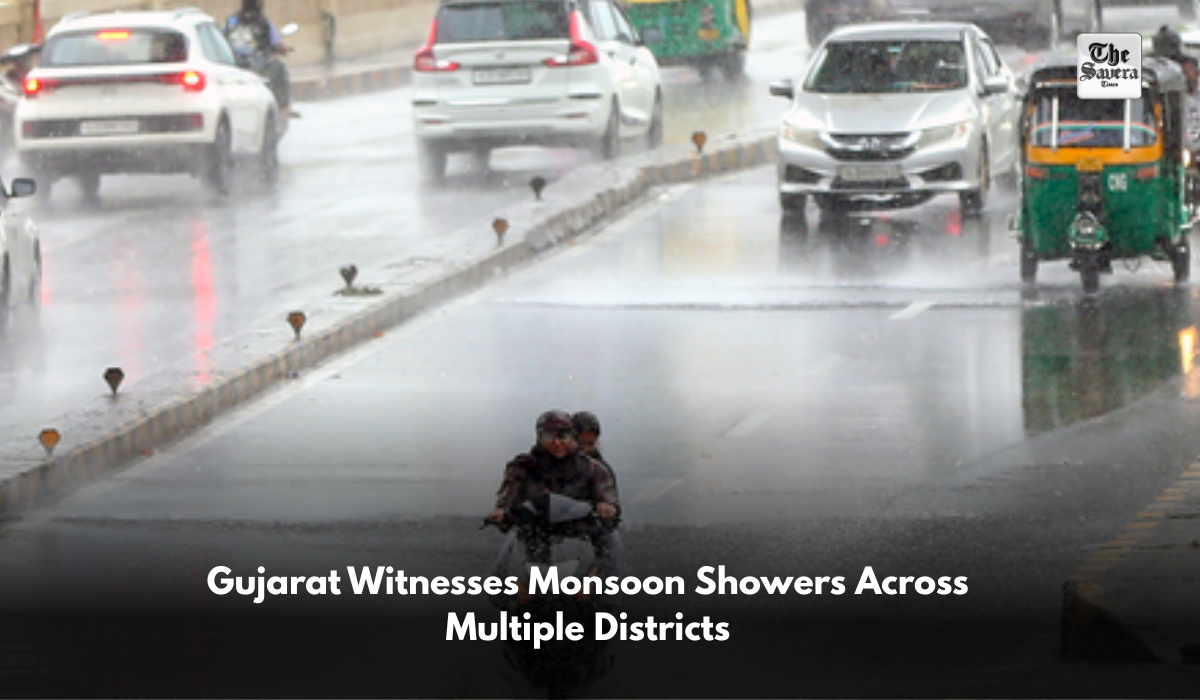
Ahmedabad, July 4: Gujarat witnessed widespread monsoon showers in the past 24 hours, with rain recorded in all 33 districts and 199 talukas, according to the State Emergency Operation Centre (SEOC) in Gandhinagar.
Heavy Rainfall Lashes Across Gujarat Districts
The heaviest rainfall was reported in Jamkandorna (Rajkot), Idar (Sabarkantha), and Dhanera (Banaskantha), each receiving over 5 inches of rain.
Dhoraji in Rajkot and Jodia in Jamnagar also recorded more than 4 inches. Several other talukas, including Mundra and Gandhidham in Kutch, Lalpur in Jamnagar, Jetpur in Rajkot, and Wadhwan and Chuda in Surendranagar, as well as Vadgam and Dantiwada in Banaskantha, saw rainfall crossing the 3-inch mark. In total, 21 talukas reported over 2 inches of rain, 32 received over 1 inch, while the remaining 133 talukas recorded less than an inch.
As of 6.00 a.m. on Friday, Gujarat has received 39 per cent of its seasonal average rainfall. Between 6.00 and 10.00 a.m. this morning, Vav taluka in Banaskantha saw the highest rainfall in the state at 3 inches.
Gujarat has recorded approximately 266–324 mm of monsoon rainfall so far this season (from June 1 to early July), amounting to around 37 per cent of its long-term seasonal average.
IMD Confirms Above Normal Monsoon Performance
The India Meteorological Department and State Emergency Operation Centre confirmed this “above-normal” monsoon performance, with cumulative rainfall surpassing a third of the expected total and reflecting robust early-season precipitation. In response to the widespread rainfall across Gujarat, the state government has activated district-level control rooms and instructed local administrations to remain on high alert, especially in low-lying and flood-prone areas.
Teams from the State Disaster Response Force (SDRF) and National Disaster Response Force (NDRF) have been kept on standby, while drainage and water-logging management efforts are being closely monitored. The government is also coordinating with agriculture, power, and road departments to ensure minimal disruption to essential services and safeguard standing crops in heavily affected talukas.
